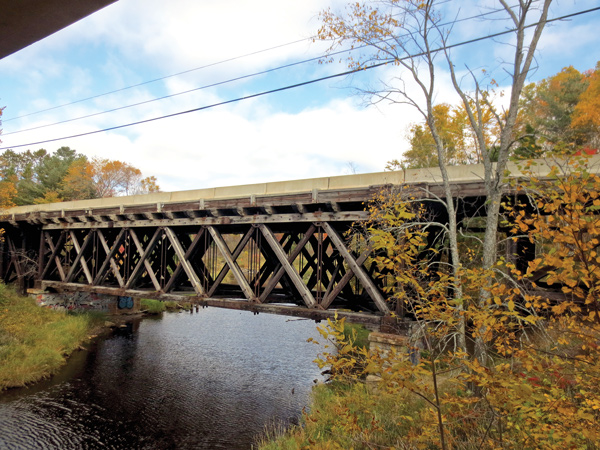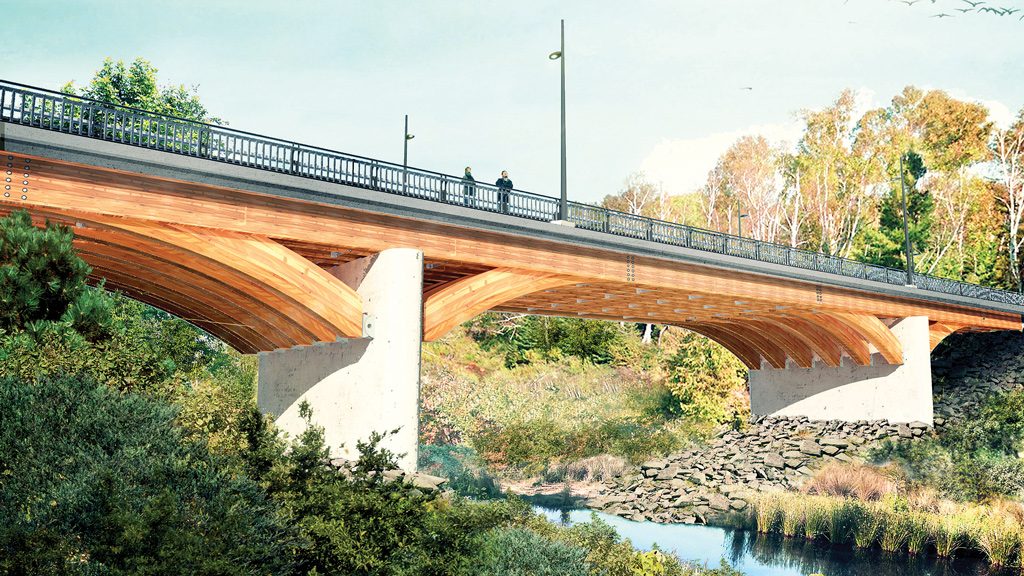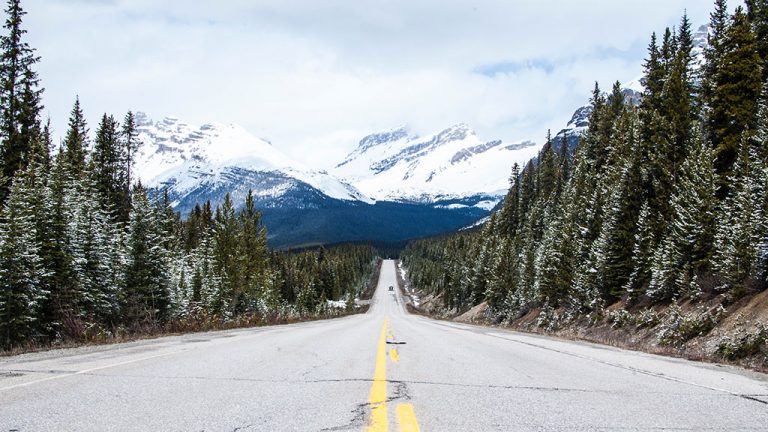Wooden bridges may be making a coming back of sorts in Ontario.
In a project which interweaves economic opportunities for First Nations, nurtures the enhanced use of timber, and pays tribute to this province’s bridge history, a timber girder and arch bridge will be under construction in Northern Ontario by this summer.
To be built by a limited partnership company comprised of majority owner Nipissing First Nation (NFN) and Miller Paving Limited, the $12-million Duchesnay Creek Bridge will be erected over Highway 17B on the Nipissing First Nation–North Bay boundary.
Scheduled for completion in 2020, the 93-metre-long (305-foot) and 12-metre-wide (39-foot) bridge will consist of three spans and 12, 1,710-mm deep and 315-mm wide glue-laminated girders. Other than the girders and arches, the rest of the bridge will be built with reinforced concrete — with some steel piling for the piers.
The project will also include the pavement of the one kilometre of 17B owned by the province and the removal of an abandoned CPR railway bridge.
Lea Consulting Limited was the detailed designer, while Stantec completed the preliminary design.
In a press release issued at the end of March, the provincial government cited the project’s overall social, economic, and infrastructure advantages and the specific benefits to the First Nation.
“Through this procurement, Ontario is working with Nipissing First Nation to create opportunities for skills development and job creation while building beneficial infrastructure,” said finance minister and Nipissing MPP Vic Fedeli.
Commenting on the contracting arrangement, Chief Scott McLeod noted that “the Nipissing First Nation has built a strong business relationship with Miller over the past 15 years, and this announcement represents the fruits of our relationship-building.”
Details of the partnership agreement are still being worked out, says Nipissing First Nation chief executive officer Dwayne Nashkawa.
“Miller has the technical management experience and we will be supplementing that,” says Nashkawa, adding the labour force will include a mix of both NFN residents and non-members.
Sourcing aggregates won’t be a problem as the First Nation has its own quarry, he points out.
Located only metres from Lake Nipissing, the new structure will replace the original Duchesnay Creek Bridge which was closed by the Ministry of Transportation (MTO) this past January for safety reasons after an inspection determined it was in poor condition.
Constructed in 1937, the timber deck truss bridge is a designated heritage structure and the last one of its kind on Ontario’s provincial highway network, says MTO senior project engineer Jim Bucci.

With the exception of a 1930s resurgence in the use of timber spans in Northern Ontario through the application of new methods of preservation, the once common wooden bridge was gradually replaced by steel and concrete ones, a transition which started in the early 20th Century, he says.
And in the preliminary design for the Duchesnay Creek Bridge, concrete or steel bridge girders with a concrete deck covered with asphalt were actively considered.
As design progressed into detailed phase which included an evaluation of materials, however, “the timber girder was selected to address a design that was sympathetic to the heritage significance of the existing timber bridge.”
The timber design is “a modern interpretation of the heritage structure.”
Advances in timber construction have evolved over the years allowing glue-laminated girders to span longer distances which far exceed conventional dimensional timbers, says Bucci, in explaining why girders are being instead of a truss system which was the old bridge’s defining heritage feature.
No specific construction challenges are anticipated. The unique aspects of the bridge have been included in the design, including procurement, fabrication and installation of the timber girders which will be prefabricated, shipped to the site and then lifted into place. Dimensional tolerances have been allowed for in the design to aid in the onsite erection, he says.
The general contractor will determine the source of the timber. But there are at least two companies within a 500-kilometre radius of the site which are capable of fabricating the timber girders, he points out.
First task in the construction schedule will be the dismantling of the 1937 structure as the replacement bridge will be installed in the exact same location, says Bucci.
As a portion of the project near the Duchesnay Creek Bridge goes through Nipissing First Nation reserve land, the First Nation will be providing a shuttle service to connect with transit service in North Bay. Highway 17B was the old commuter route through the city and motorists will be able to use local streets and roads to connect with Highway 17, he says.
Asked if this project will spur the use of timber in bridge construction, Bucci says the ministry will look for opportunities to construct timber bridges at locations where it might be feasible.
“We will have to see how this one goes.”








Recent Comments
comments for this post are closed